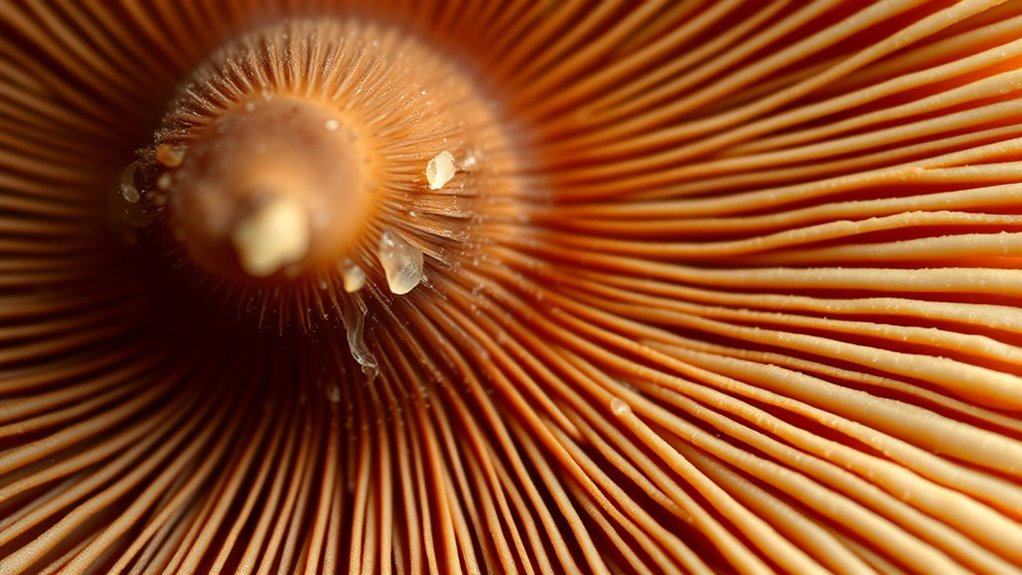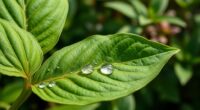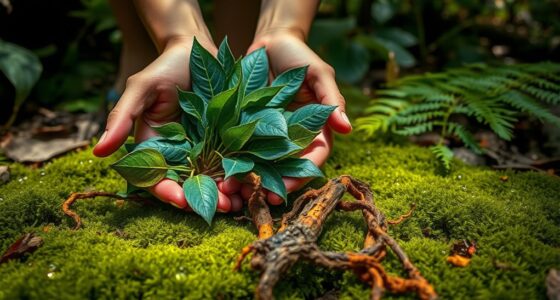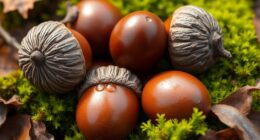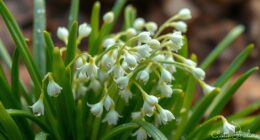To master spore print techniques, start by selecting a fresh mushroom and placing its cap, gills down, on a clean surface covered with a white paper or glass. Cover it to prevent air disturbance and wait several hours or overnight. Observe the color of the spores that fall onto the surface; this key detail helps distinguish safe mushrooms from toxic ones. Perfecting these steps boosts your identification accuracy—you’ll find out more if you keep exploring these essential methods.
Key Takeaways
- Select a fresh mushroom and place the cap, gills down, on white paper covered with a container to collect spores.
- Wait several hours or overnight for spores to fall and create a clear, contrasting spore print.
- Use a color chart to accurately identify the spore print’s hue and distinguish subtle differences.
- Record spore color and compare with other features to differentiate between edible, toxic, and look-alike species.
- Combine spore print analysis with visual cues and reference resources for reliable mushroom identification.
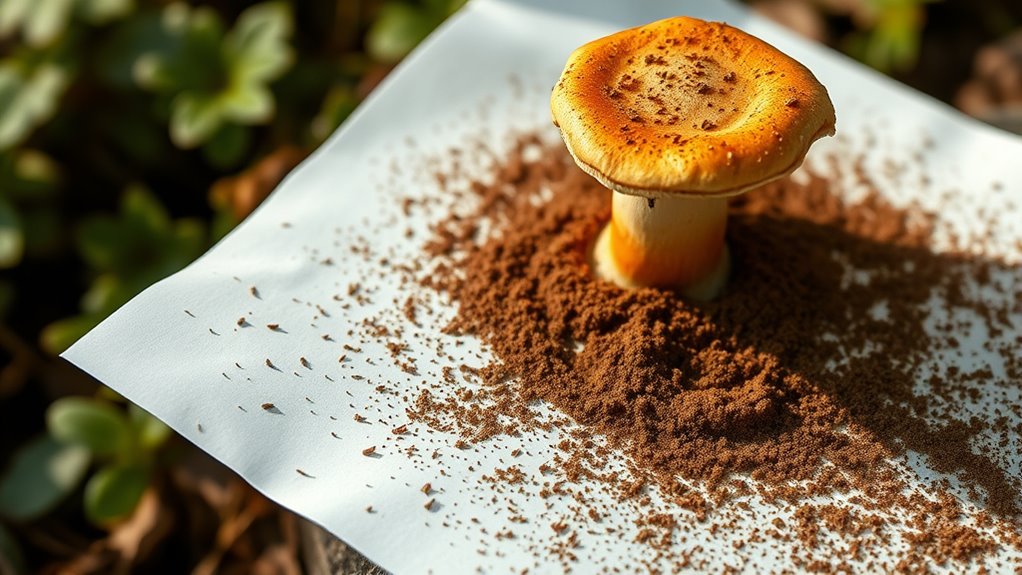
Have you ever wondered how to accurately identify mushrooms? One of the most reliable methods is creating a spore print. This simple yet powerful technique reveals a mushroom’s spore color, which plays a vital role in identification. By focusing on spore color, you can distinguish between edible, toxic, and look-alike species with greater confidence. To do this effectively, you need to understand some key identification techniques that will make the process straightforward and precise.
The first step involves selecting a fresh mushroom and removing the stem, exposing the gills, pores, or other spore-producing surfaces. Place the cap, gills down, on a clean sheet of white paper or glass. Cover it with a bowl or cup to prevent air currents from disturbing the spores. After several hours or overnight, the spores will fall, leaving a visible print. The color of this print is your primary clue. Spore colors can range from white, pink, and purple to brown, black, and even rusty-orange. Recognizing these subtle differences is essential for proper identification.
Once you’ve made your spore print, it’s time to analyze the color carefully. Use a good light source and compare it to a color chart, if available, to determine the exact hue. This step is critical because many mushrooms look similar in appearance but have distinct spore colors. For example, a mushroom with a white spore print might be edible, while one with a dark purple or black spore print could be toxic. The key is to pay close attention to the shade and intensity of the spore color, as well as any color variations across the print.
Carefully compare spore print color to a chart for accurate mushroom ID.
Incorporating these identification techniques into your mushroom foraging routine can greatly improve your accuracy. Remember, spore color is often the most definitive feature you can observe visually, especially when other characteristics like cap shape or color are ambiguous. Keep a small notebook or a digital record of your findings, noting the spore color and other traits. Over time, you’ll develop a sharper eye for subtle differences, making your mushroom identification more reliable and safe. Additionally, understanding the morphology of spores can provide further clues to distinguish species accurately.
Frequently Asked Questions
Can Spore Prints Identify All Mushroom Species Accurately?
You might think spore prints can identify all mushroom species accurately, but they have limitations. While they’re useful for narrowing down options, spore print limitations mean they often can’t provide complete species identification accuracy. Factors like color variations and overlapping features make it hard to rely solely on spore prints. For precise identification, combine spore prints with other methods, ensuring you avoid misidentification and stay safe.
What Tools Are Best for Collecting Spore Prints?
Imagine a smooth, dark glass slide or a pristine piece of white paper in your hand, ready to catch the mushroom’s spores. For spore print techniques, your best collecting tools include fine-tipped tweezers, a small knife, and a spray bottle for moisture. Comparing collecting tools helps you choose what’s precise and easy to use, ensuring a clean, clear spore print that reveals mushroom identity with confidence.
How Long Does It Take for a Spore Print to Develop?
You’ll see a spore print develop within 12 to 24 hours, as spore maturation occurs and the spores settle on the surface. During this time, the color stabilizes, giving you an accurate representation of the mushroom’s spore color. Keep the print in a dark, undisturbed area to guarantee the color remains true and the print develops fully, providing reliable identification details.
Are Spore Prints Safe to Handle Without Gloves?
You might wonder if spore prints are safe to handle without gloves. While many spore prints are harmless, it’s best to prioritize glove safety and handling precautions. Wearing gloves minimizes the risk of transferring spores or potential toxins, especially with wild or unknown mushrooms. Always wash your hands afterward, and avoid inhaling spores directly. Taking these simple steps guarantees you stay safe while enjoying the fascinating process of mushroom identification.
Can Environmental Factors Affect Spore Print Color?
Environmental influences can definitely affect spore color variation. Factors like humidity, light, and temperature can cause spores to appear different in shade or intensity. For instance, high humidity might deepen the spore color, while dry conditions could lighten it. You should consider these environmental influences when analyzing spore prints, as they impact the accuracy of mushroom identification and help you understand the subtle changes in spore color variation over time.
Conclusion
Now that you’ve mastered the art of spore print identification, you’re no longer at the mercy of confusing mushroom features. Think of this skill as your trusty key to revealing nature’s secrets—guiding you safely through the forest of fungi. Remember, every spore print is a tiny map leading to confident identifications. So, embrace the process with curiosity; it’s your ticket to mushroom mastery and safe foraging in the wild.

